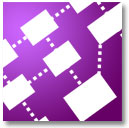Work Package
|
2. Using traditional and innovative methods to publicize the value of aerial survey, remote sensing and landscape studies amongst the general public, students, teachers and all those who explore, enjoy or care for cultural landscapes and heritage sites across Europe. 3. Promoting the pan-European exchange of people, skills and understanding through meetings, workshops, exchange visits, placements and opportunities for specialist training and employment. 4. Enhancing the teaching of remote sensing and landscape studies through courses for students and teachers, and in the longer term through a European Masters degree in remote sensing and heritage management. 5. Securing the better exploitation of existing air-photo archives across Europe by researching, assessing and publicizing their potential for heritage interpretation and landscape conservation. 6. Providing support for aerial survey, remote sensing and landscape exploration in countries relatively new to their use, especially in northern, eastern and southern Europe. 7. Further exploring the uses of laser, satellite and other forms of remote sensing and web-based geographical information systems (GIS) in archaeological and landscape research, conservation and public education. 8. Providing technical guidance and advice on best practice in aerial survey, remote sensing and landscape studies, with a particular emphasis on conservation and heritage management. Working Party leaders are responsible for the coordination of the work that is done for these 8 actions and for organizing one technical meeting per Action each year, where the finished work will be assessed and future tasks will be planned. |
|






 Public awareness and dissemination of challenging skills in aerial and remote sensing techniques, at a very European scale, will be achieved by the ArchaeoLandscapes project through eight following key Actions / Work Packages:
Public awareness and dissemination of challenging skills in aerial and remote sensing techniques, at a very European scale, will be achieved by the ArchaeoLandscapes project through eight following key Actions / Work Packages:



